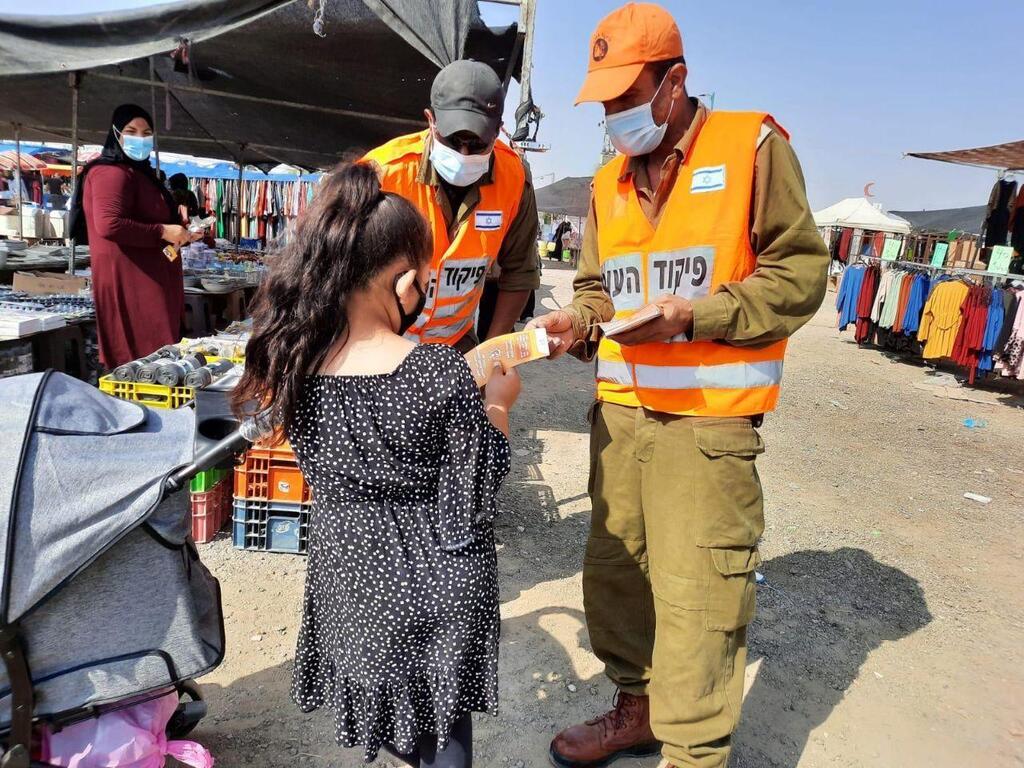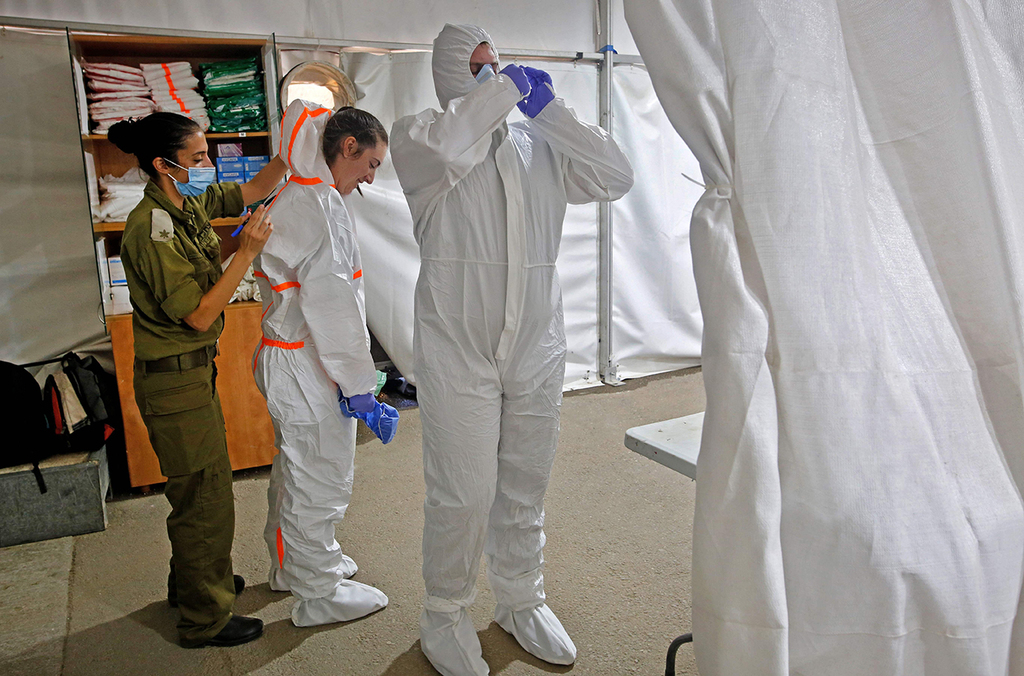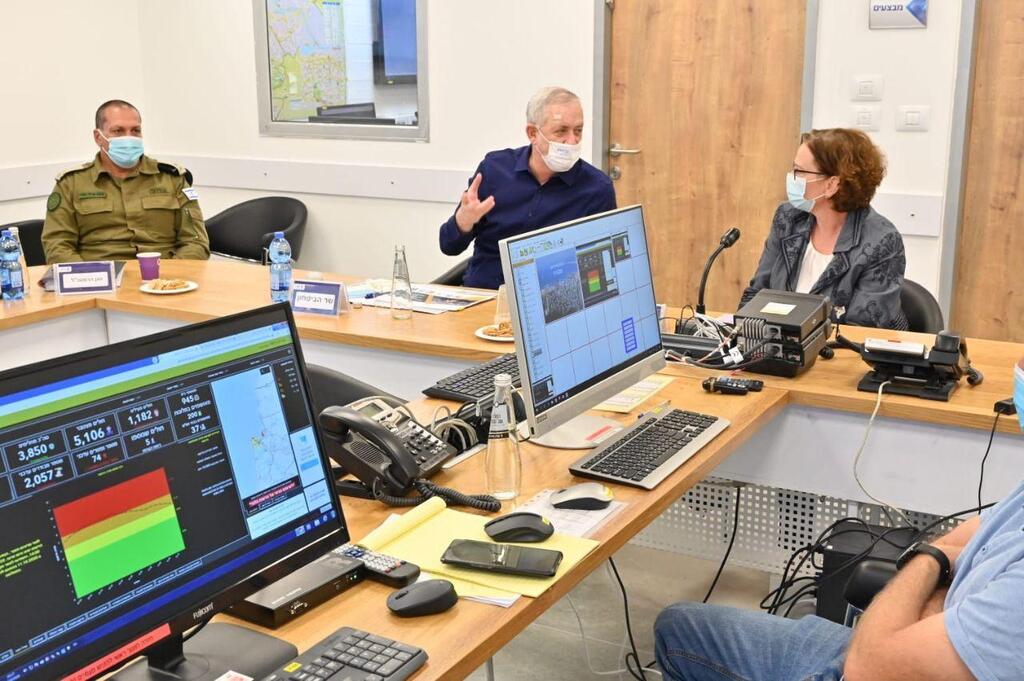Getting your Trinity Audio player ready...
A new idea was recently presented to the commander of the IDF Home Front Command, not unlike something that works well in commercial chains that publish the revenue for each store in the chain in order to generate competition among store managers.
There were some who thought the Home Front Command should imitate this model by presenting a daily snapshot of morbidity levels in cities around the country. For this is a real measure by which Israelis can assess their local leaders.
3 View gallery


IDF Home Front Command troops distributing information pamphlets in a Bedouin community in southern Israel
(Photo: IDF Spokesperson's Unit)
But the head of the Home Front Command, Maj. Gen. Uri Gordin rejected the idea for fear it would harm delicate relations between neighboring cities, as happened during the first wave of the virus when the mayor of Ramat Gan wanted to block entry for residents of the adjacent Bnei Brak.
But even without any official announcement, the concept of municipal responsibility is already taking hold.
The media has already latched onto this trend, and it is no coincidence that more and more mayors are publicly explaining what is happening in their cities and how they have turned them from "red" morbidity hot spots to low infection "green" zones.
In July and August, when the Home Front Command officially accepted responsibility for handling the virus, it came with an operational strategy originally designed to deal with war or an earthquake.
This strategy has been adapted to the pandemic - a situation that has never before been seriously tested – and places the role of local authorities at the heart of any return to normal life.
As such, the Home Front Command, whose entire raison d'être is protecting civilians and is already divided into districts and sub-districts, is ideal for working with Israel's 255 local authorities and councils.
During the first wave of the pandemic, even before the Home Front Command was officially assumed responsibility, its municipal liaison units were working with local leaders to get a clear image of a range of operations in their own cities.
Quite a few mayors discovered, for example, that they had no idea what was going on in their educational institutions and nursing homes.
Some also discovered that they did not have up-to-date lists of people in need of physical assistance, food supplies, medicines and so on.
To the Home Front Command, its work with local authorities also offers a dry run for wartime, as it allows them to update the databases on the condition of bomb shelters, inventories and emergency services.
And in the current crisis, as in wartime, the Home Front Command is bringing its logistical might to local authorities, including planning, organizing, manpower and money - everything a municipality does not have but the state does.
Today, the mayors are running their situation rooms based on coronavirus data flowing from the Home Front Command.
3 View gallery


IDF troops preparing to operate a coronavirus s testing site in Tel Aviv
(Phjoto: AFP)
Twice a day, representatives of the municipalities, Home Front Command and police analyze the situation and make decisions on whether to open testing center sites, where to deliver food aid, who to transfer to designated coronavirus hotels and so on.
In fact, there are already several municipalities with their own investigative mechanisms for breaking the chains of contagion.
Were it not for politics, it would have worked like this from day one. At least now no one will be interfering.


